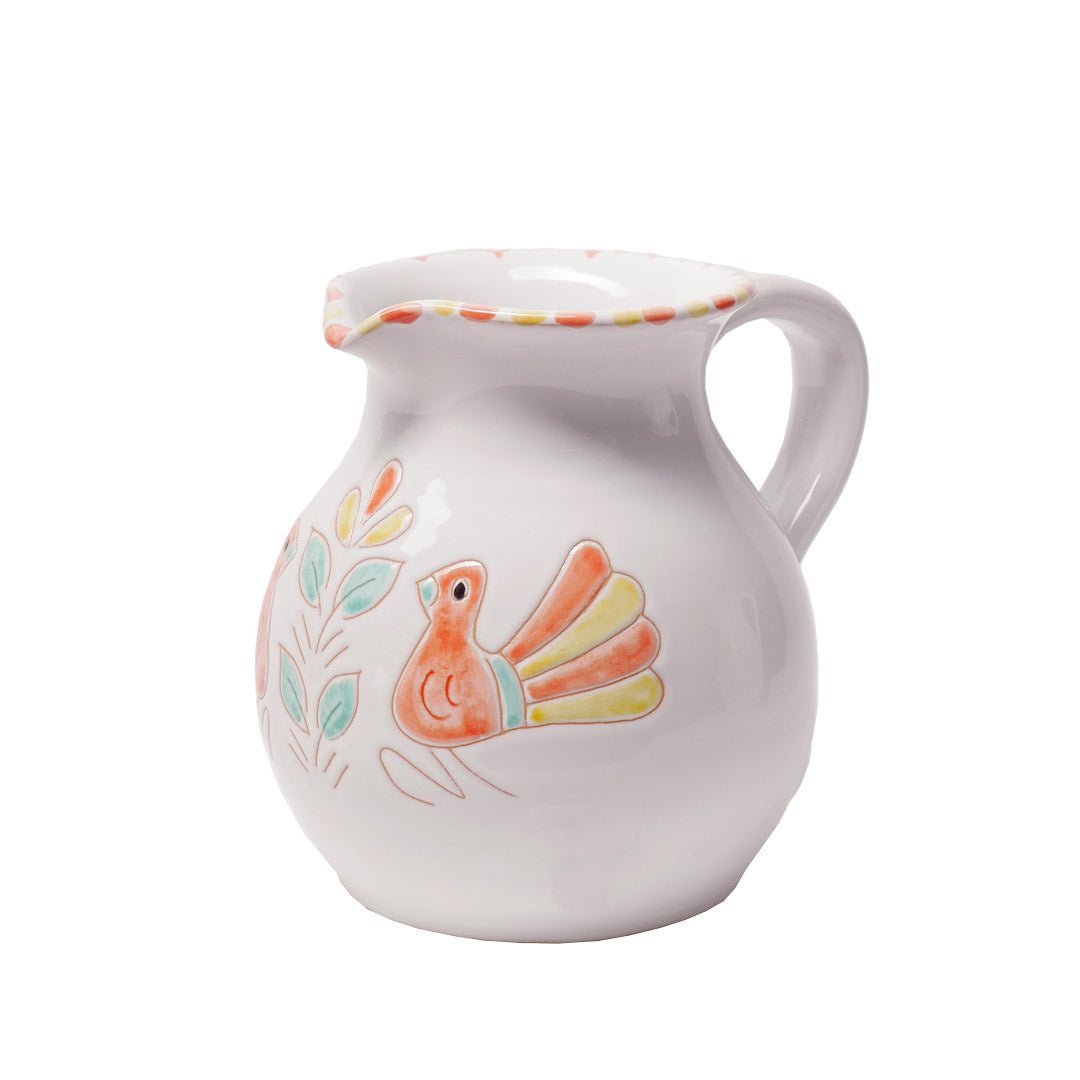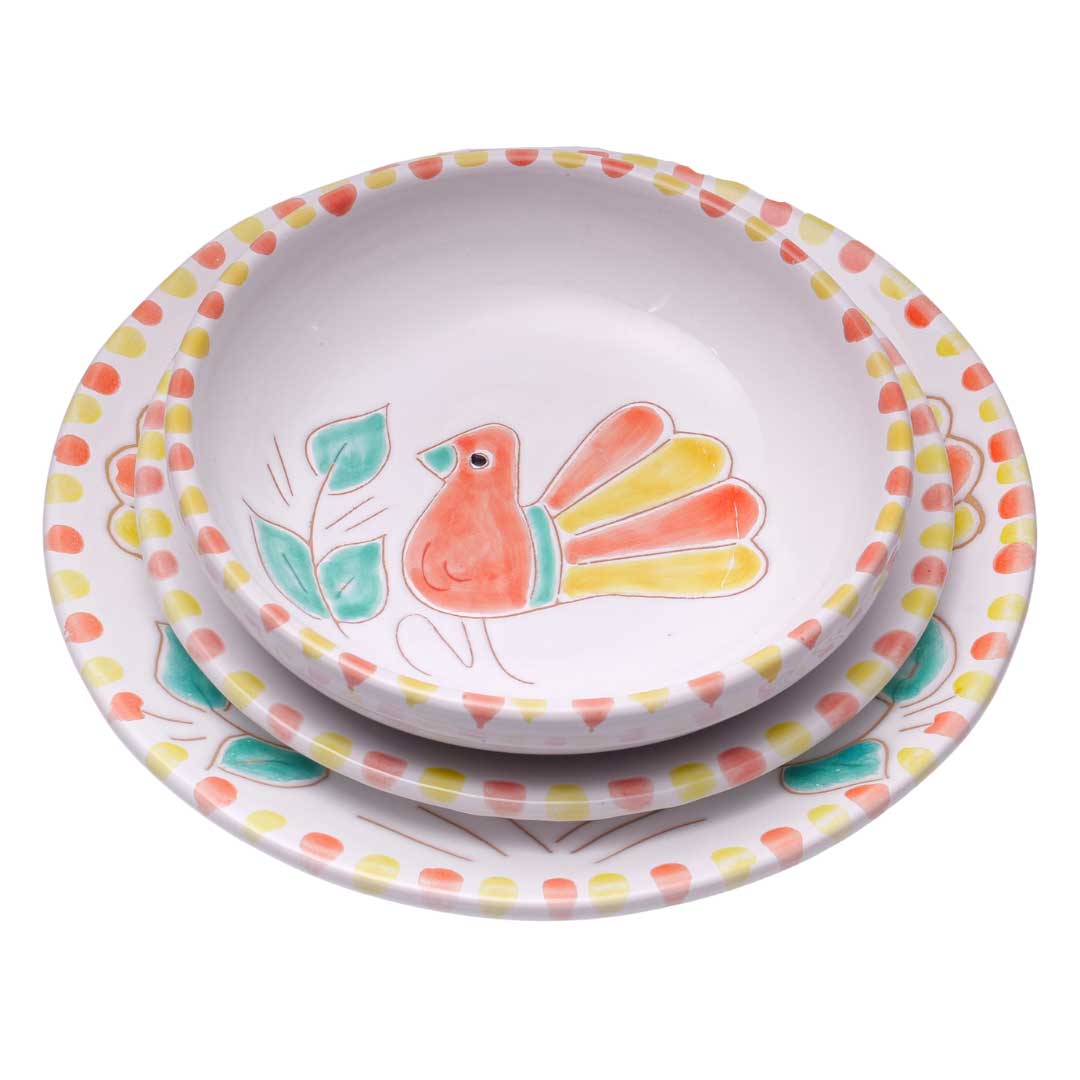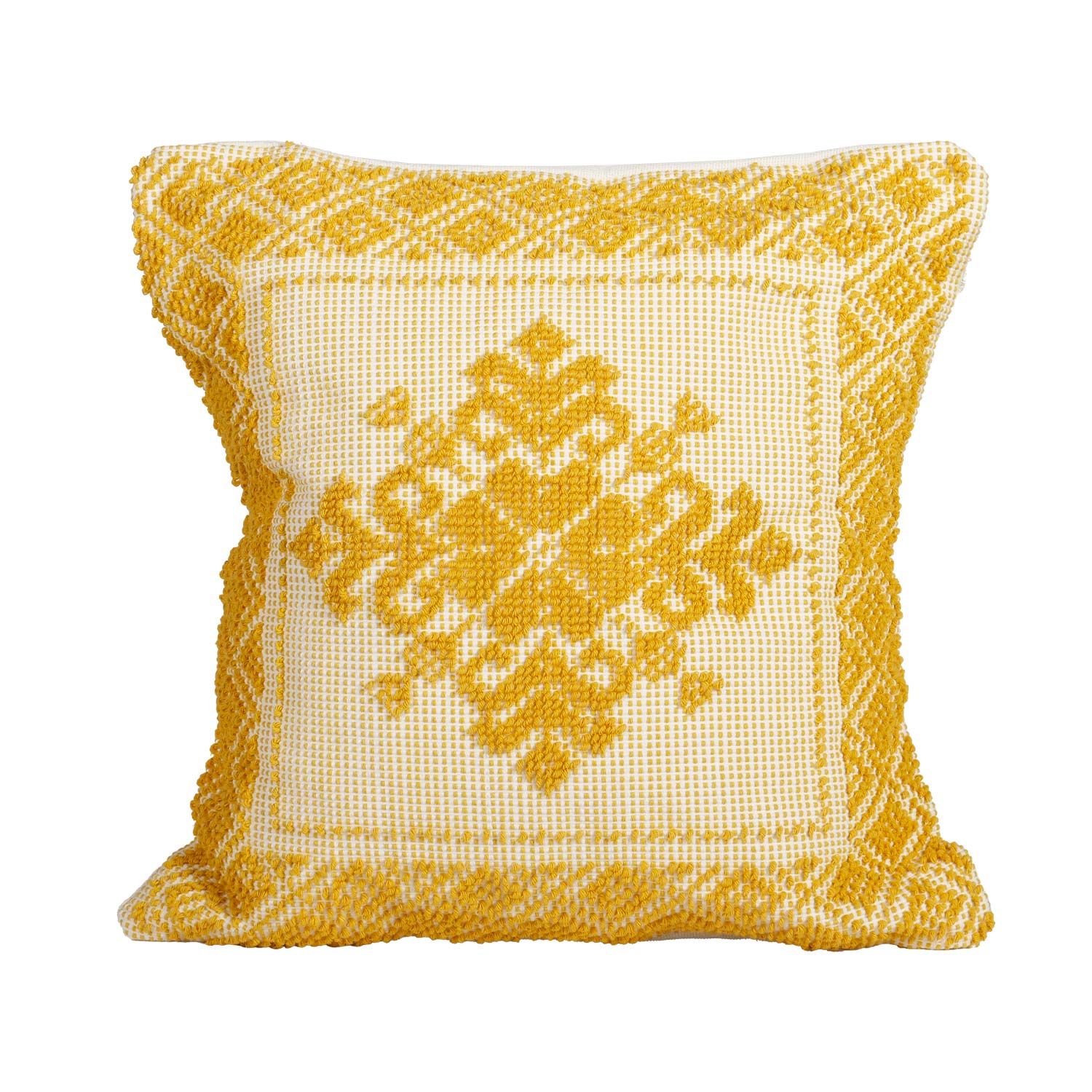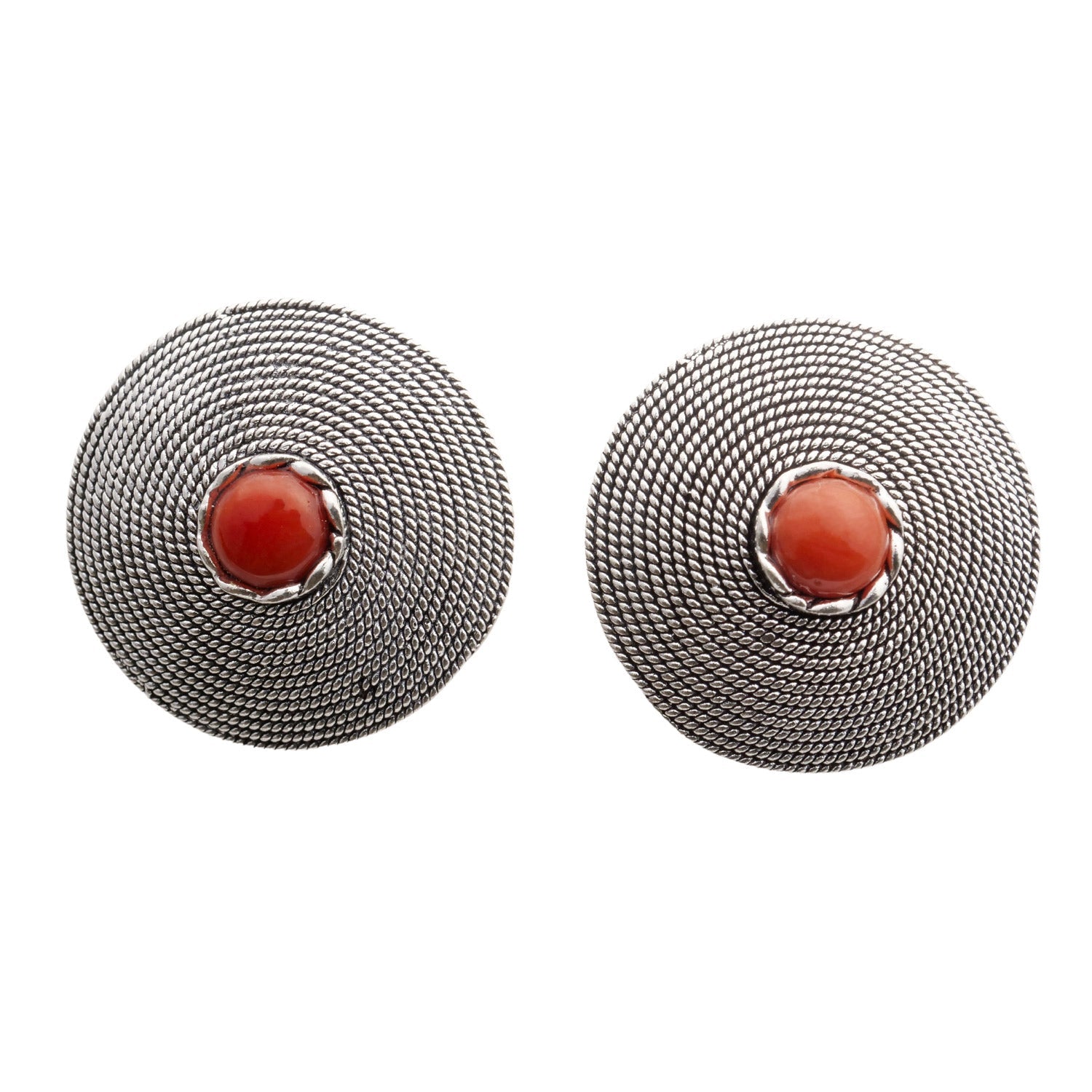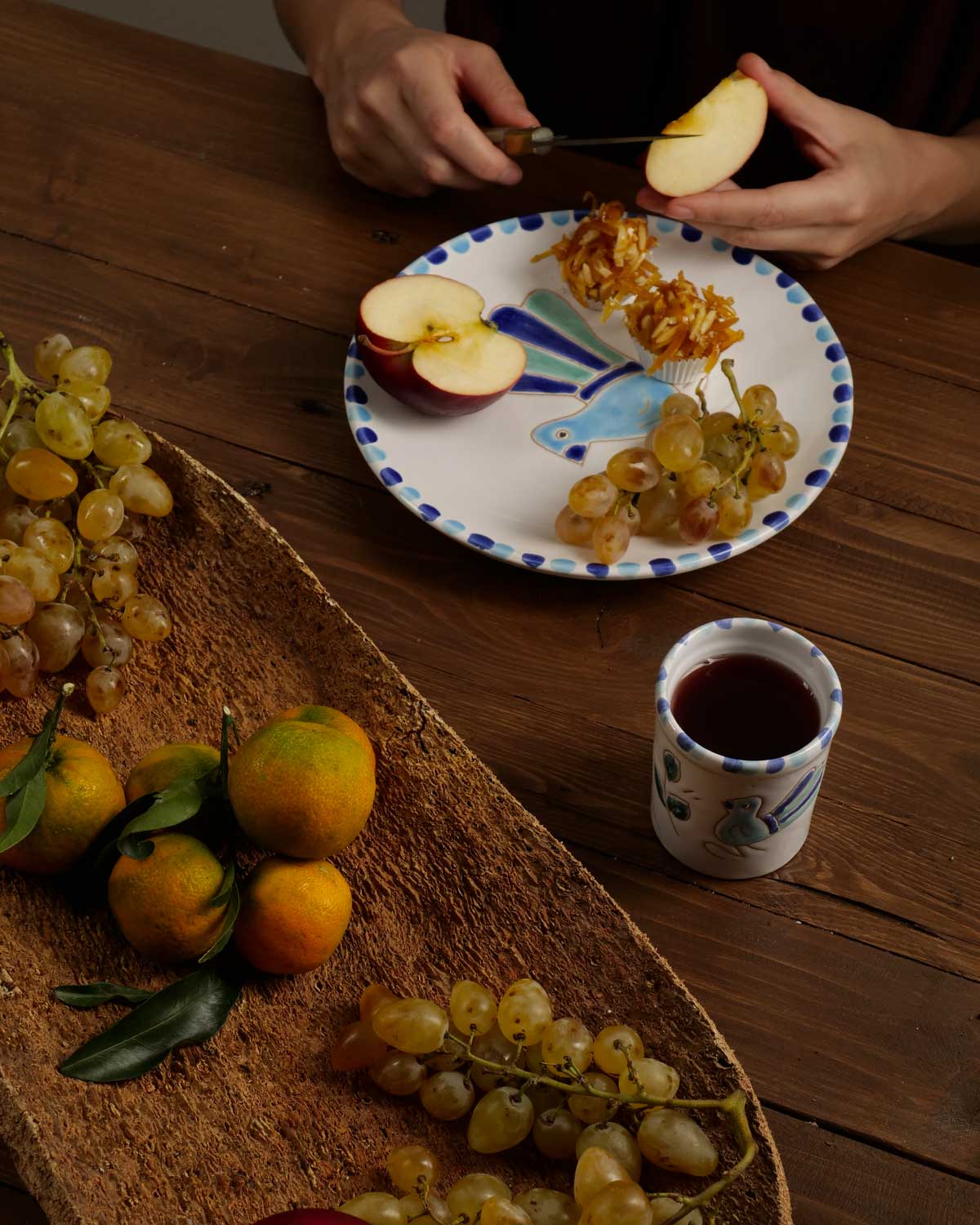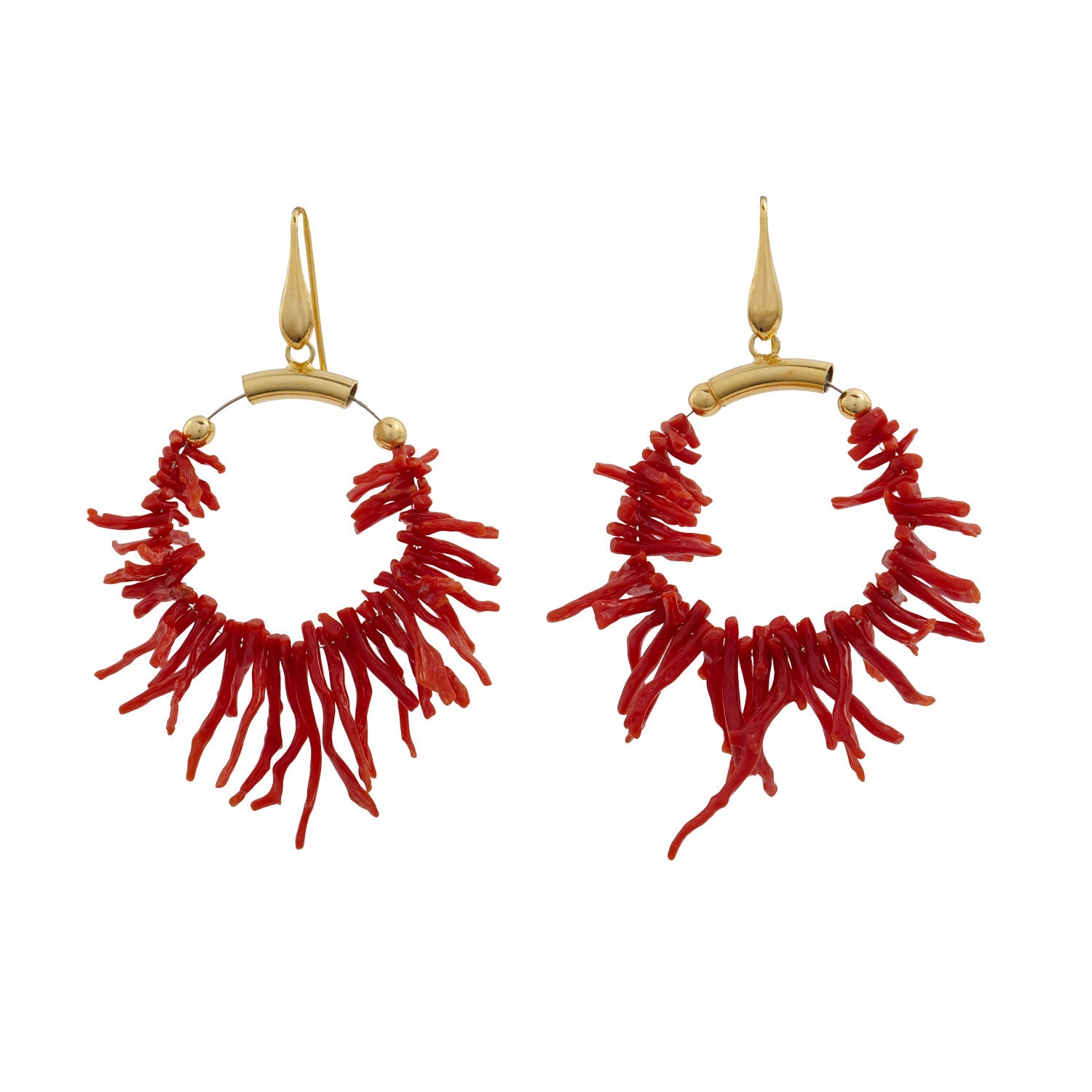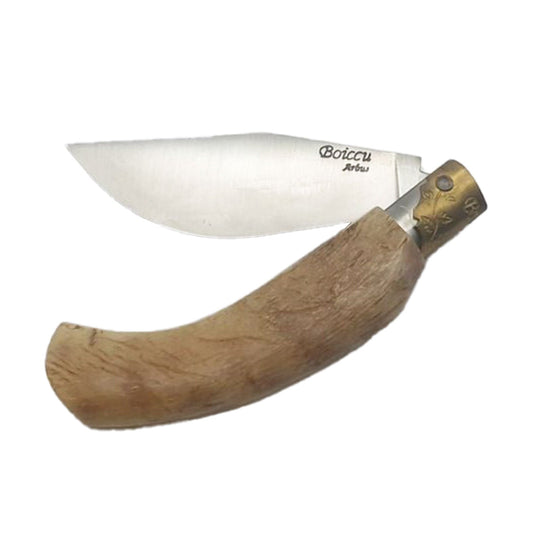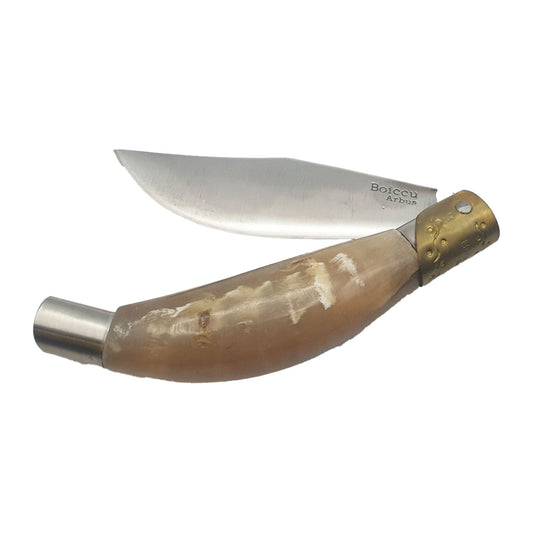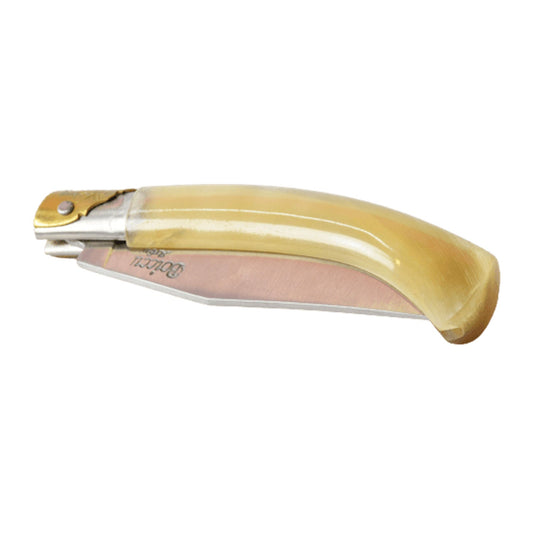Artigianato Sardo
-
Dal 1972 Artigianato Pasella racconta l’anima dell’artigianato sardo attraverso ceramiche uniche e una selezione curata di manufatti. Scopri oggetti che parlano di identità, bellezza e tradizione da vivere ogni giorno.
-
Quali sono i prodotti artigianali sardi più rappresentativi?
L’artigianato sardo si distingue per l’autenticità dei materiali, la precisione dei dettagli e il legame profondo con la tradizione. Tra i prodotti più rappresentativi ci sono le ceramiche decorate a mano, spesso arricchite da simboli come la pavoncella, che richiama l’identità agro-pastorale dell’isola. I gioielli in filigrana, come la Fede Sarda, sono espressione di appartenenza e memoria: piccoli capolavori che raccontano affetti e radici.
A fianco dei gioielli, i coltelli sardi occupano un posto centrale. La resolza di Pattada, in particolare, è conosciuta per la sua eleganza funzionale, frutto di un sapere artigiano che unisce corno e acciaio in modo armonioso. Immancabili infine le maschere tradizionali, come quelle dei Mamuthones e degli Issohadores, nate per riti ancestrali e oggi apprezzate anche come oggetti decorativi carichi di identità.
Ogni creazione è un frammento di Sardegna: non solo un oggetto, ma una storia fatta a mano.
-
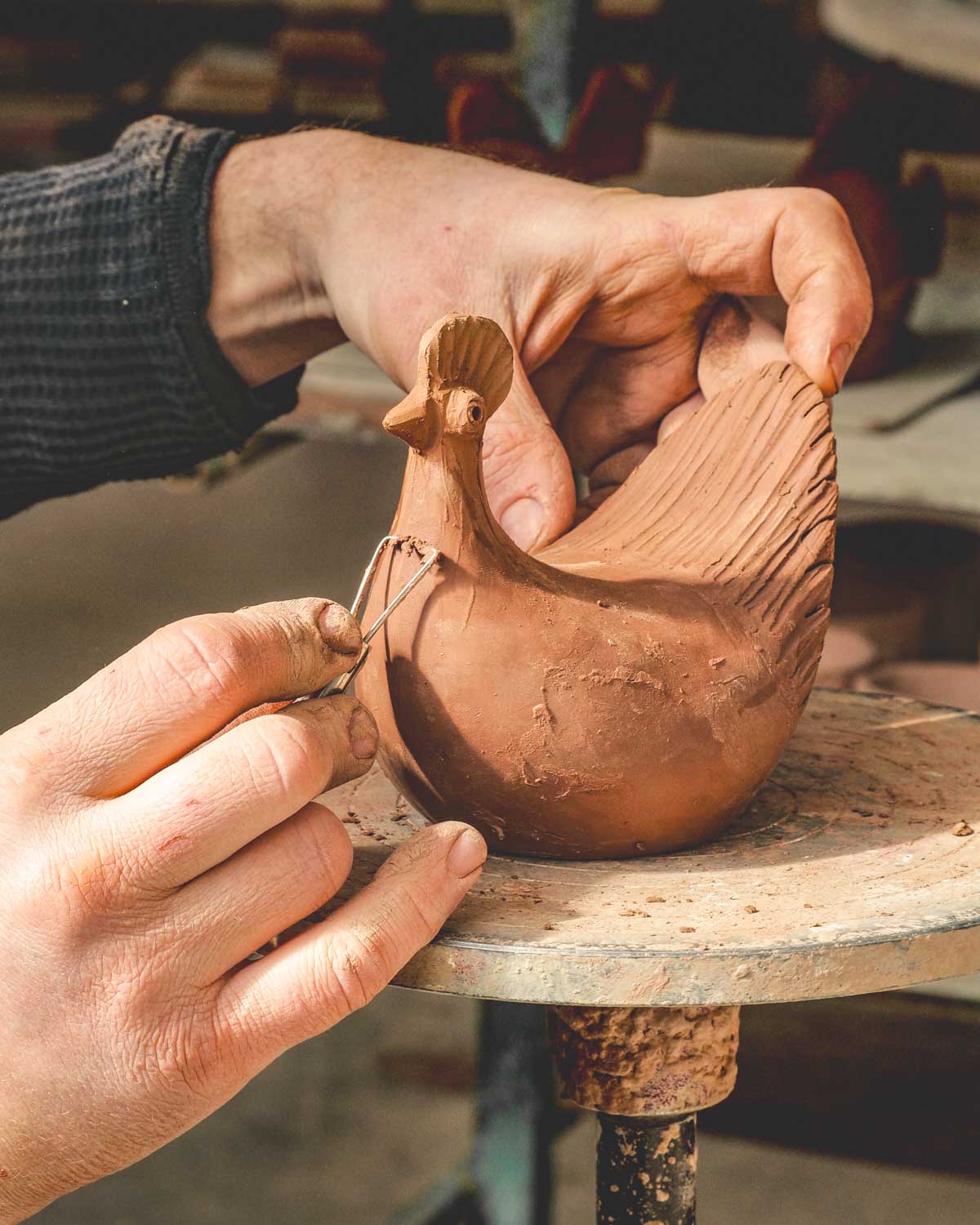
Tradizioni dietro i prodotti artigianali sardi
-
Grazie alla sua posizione strategica al centro del Mediterraneo, la Sardegna è stata per millenni un luogo di approdo e di scambi culturali. L'isola è riuscita a mantenere un equilibrio tra le sue specificità locali e le influenze delle numerose popolazioni che si sono succedute nel territorio. Risalire alle origini dell'artigianato sardo significa fare un lungo viaggio nel tempo, che attraversa epoche e civiltà diverse. Tuttavia, è facile notare come le forme e le influenze di altri paesi si siano intrecciate in questo percorso creativo, diventato con il tempo un'importante espressione culturale di un popolo che ha saputo mantenere viva la sua creatività e inventiva.
-

Ceramiche Sarde
-
Le forme ceramiche tramandate in Sardegna vantano una storia antica quanto i nuraghe sardi: le culture nuragica e pre-nuragiche hanno infatti lasciato una testimonianza varia e sorprendente fatta di manufatti in ceramica, ancora visibili nei maggiori musei archeologici dell’Isola. Tra questi reperti antichi troviamo molti antenati dei moderni modelli d’uso corrente, così come sono riconoscibili forme legate ai tempi della Magna Greca e della conquista Romana, come le famose brocche di Oristano. Nel Medioevo sardo, la cultura della terracotta si conservò integra, anche se gli artigiani locali ebbero modo di conoscere modelli di maestranze arabe nel periodo romanico, importati da quei professionisti inviati sull’isola per edificare e decorare le facciate delle Chiese.
Da sottolineare come, tra centro e centro, fosse più leggibile in passato una differenza sia nelle forme e nei prodotti realizzati, sia nella materia prima utilizzata. La terra argillosa, infatti, si trovava in corrispondenza di diversi territori paludosi, limitrofi a stagni e corsi d’acqua, e la lavorazione variava a seconda delle sue peculiarità minerali. -
Dalla tradizione ceramica sarda derivano le forme attuali delle brocche (per servire l’acqua o il vino a tavola), la classica scivedda (un ampio recipiente, immancabile nelle cucine sarde, utilizzato per diverse tecniche di impasto e nella panificazione), i vasi e le grandi anfore che fino alla metà del ‘900 erano ancora utilizzate nei centri rurali sardi per recuperare l’acqua alla fonte.
Ancora oggi, le decorazioni sono caratterizzate da un gusto semplice, e la forma dei manufatti mantiene uno stile pratico, sobrio e armonioso. Per la decorazione il gusto isolano ha visto una lenta evoluzione dalle antichissime figurazioni geometriche e astratte, all’acquisizione - nei secoli successivi - di stili più “figurativi”, con la realizzazione di simboli legati al cristianesimo e al mondo agropastorale, come ad esempio la classica pavoncella sarda (simbolo di rinascita per la sua somiglianza con la fenice). Parallelamente, sono state tramandate sia le antiche tecniche di incisione della superficie esterna a fine decorativo, sia il rivestimento in smalto e, negli ultimi decenni, la realizzazione di raffinate decorazioni “a pennello”.
-
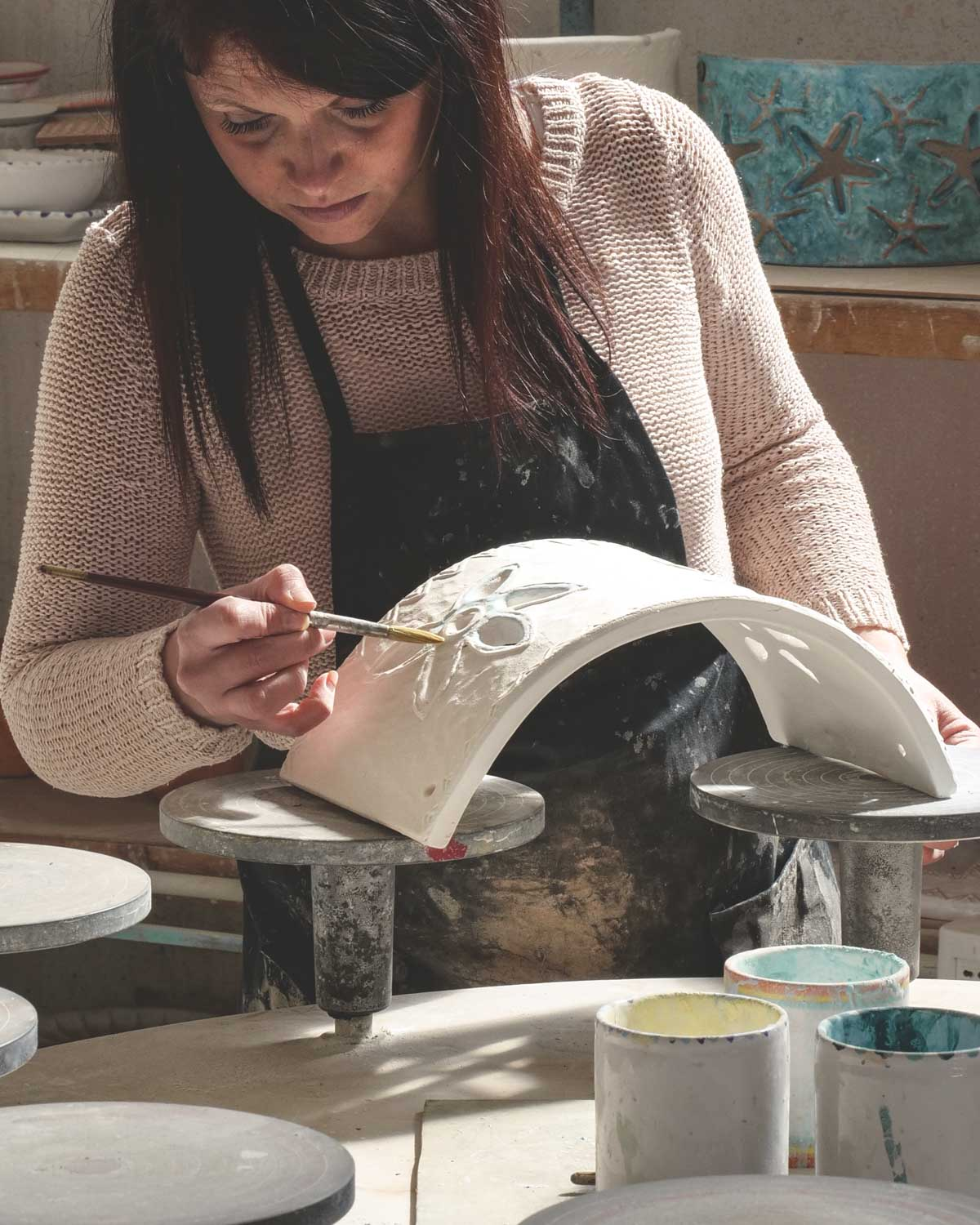
Handcrafted Ceramic Wall Lights | Artisan Appliques
Illuminate your spaces with unique pieces, rich in charm and proudly handmade....
-

Raku Ceramics | Pasella Craftsmanship
Our way of reinterpreting the ancient Raku ceramic technique means that each...
Dopo aver esplorato l'eleganza e la funzionalità delle ceramiche sarde, espressione autentica dell'artigianato sardo, ci immergiamo ora nell'arte orafa dell'isola.
Gioielli Sardi
-

-
La Fede Sarda rappresenta un connubio ideale tra il mondo antico e quello contemporaneo, dove la tradizione si fonde con il lavoro artigianale dell'uomo e la maestria tramandata si unisce all'abilità tecnica dei maestri orafi. Il gioiello simbolo della Sardegna è s'aneddu a granos, nota come Fede Sarda. Caratterizzata da file di stelline o canottigli, ogni pezzo riflette l'appartenenza a una specifica area, paese o zona. La particolarità dell'anello risiede nella grandezza della granulazione dei pallini, disposti in file parallele, o nell'orientamento delle foglioline, simili a virgolette che definiscono un disegno curvilineo delicato come un merletto. Originariamente con tre o quattro file, nel corso del tempo la tradizione si è evoluta verso modelli più grandi, mantenendo la ricchezza simbolica e l'identità legata alle diverse regioni della Sardegna.
Dall’eleganza dei gioielli alla forza simbolica della lavorazione dei coltelli, l’artigianato sardo continua a esprimersi attraverso forme diverse, unite da un comune legame con i simboli e l’identità della Sardegna.
Coltelli Sardi
-

-
I coltelli sardi, forgiati nel corso dei secoli come fedeli compagni nelle fatiche agricole, rappresentano la ricca storia dell'Isola. Non sono solo utensili, ma simboli di usi e costumi che si sono sviluppati attorno a loro, riflettendo la durezza e la spartanità della società rurale sarda.
Questi coltelli, antichi alleati nei campi, hanno oggi acquisito un significato più ampio. Rappresentano non solo regali preziosi, ma anche segni di stima e rispetto. Tuttavia, la tradizione richiede che chi riceve un coltello in dono debba corrispondere una cifra simbolica al donatore, liberandolo così dalla preoccupazione che l'oggetto possa portare sfortuna nelle mani sbagliate.
La lama affilata, oltre a essere uno strumento pratico, assume anche un significato simbolico, rappresentando il legame tra chi dona e chi riceve. Il gesto di porgere il coltello aperto, con il palmo verso l'alto, simboleggia fiducia e la certezza che l'oggetto sarà usato con buone intenzioni.
Negli anni '50, con la rivoluzione tecnologica che ha trasformato molti settori dell'economia sarda, anche il ruolo del coltello ha subìito una metamorfosi. Da utensile polivalente a elemento d'arredo, il coltello sardo è diventato un autentico gioiello per i collezionisti. I diversi provenienti da vari paesi e territori della Sardegna, come la resolza di Pattada nel Sassarese o l'arresoja di Arbus-Guspini nel Sud Sardegna, sono un connubio di forza, eleganza e robustezza, ciascuna portatrice di una tradizione unica.
-
Pattadese-style knife, juniper handle, 10 cm blade
Regular price €119,00 EURRegular priceUnit price / per -
Pattadese, polished light bovine horn handle, 23 cm in length
Regular price €135,00 EURRegular priceUnit price / per -
Arburesa Knife Model "gennamari", bovine handle, 8 cm blade
Regular price €99,00 EURRegular priceUnit price / per -
Arburesa knife with double collar, 9 cm blade.
Regular price €136,00 EURRegular priceUnit price / per -
Sculpture Knife Dog, Buffalo Handle, 23 cm
Regular price €270,00 EURRegular priceUnit price / per -
Boar Sculpture Knife, Buffalo Handle, 23 cm
Regular price €270,00 EURRegular priceUnit price / per -
Arburese knife, double bolster, 9 cm blade, Original Knife Made in Sardinia (Italy).
Regular price €90,00 EURRegular priceUnit price / per -
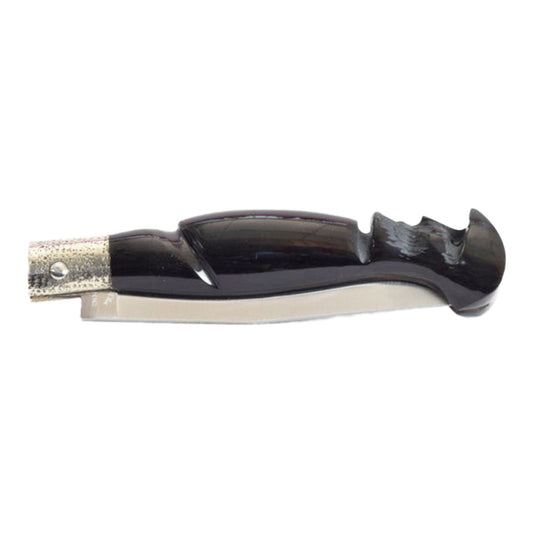 Sold out
Sold outPastor Sculpture Knife
Regular price €190,00 EURRegular priceUnit price / per
Dalla precisione dei coltelli alla potenza espressiva delle maschere, l’artigianato sardo prosegue il suo racconto, dando volto e voce ai riti, ai miti e all’anima profonda dell’isola.
Maschere Sarde
-

-
Le maschere sarde più conosciute - come i Mamuthones di Mamoiada e i Boes di Ottana - fanno parte di una tradizione più ampia, quella del Carnevale sardo. Un fenomeno che si differenzia dal Carnevale tradizionale italiano per date, maschere e celebrazioni.
Le feste iniziano già tra il 16 e il 17 gennaio, con la notte di Sant’Antonio Abate: nei diversi paesi dell’Isola la notte viene rischiarata da enormi cataste di legna, posizionate di fronte alla chiesa dedicata al Santo, che vengono accese per celebrare col fuoco la fine dell’inverno ed auspicare un felice ritorno della primavera, delle piogge e del buon raccolto. La tradizione vede le donne offrire cubetti di pane o pan’e saba (mosto di vino cotto, frutta secca e spezie), mentre i giovani donano grossi ciocchi di legno alla pira, e gli uomini portano in processione la statua del Santo, che termina la celebrazione girando per tre volte intorno al fuoco.
Proprio nella notte di Sant’Antonio si apre ufficialmente il Carnevale sardo: a Mamoiada (provincia di Nuoro) è possibile vedere la processione di Mamuthones e Issohadores, mentre Ottana (provincia di Nuoro) propone le maschere di Boes e Merdules, accompagnati da Sa Filonzana.
Nonostante i tentativi di cristianizzazione dell’isola - che si protrassero a lungo, con sacche di paganesimo ben radicate fino al VII secolo - i culti più sentiti dalla popolazione - legati a scopi propiziatori per la fertilità della terra e l’abbondanza delle acque - rimasero nella cultura popolare, pur inquadrate in quello che la Chiesa concesse come Carnevale, un periodo di rinnovamento simbolico dove il caos ribalta l’ordine sociale prima della Quaresima.
-
Adult Boes mask, black
Regular price €290,00 EURRegular priceUnit price / per -
Original Boes Mask for Adults, Light Background
Regular price €290,00 EURRegular priceUnit price / per -
Original Boes Mask, boy, dark
Regular price €195,00 EURRegular priceUnit price / per -
Original Mamuthones mask, medium
Regular price €210,00 EURRegular priceUnit price / per

